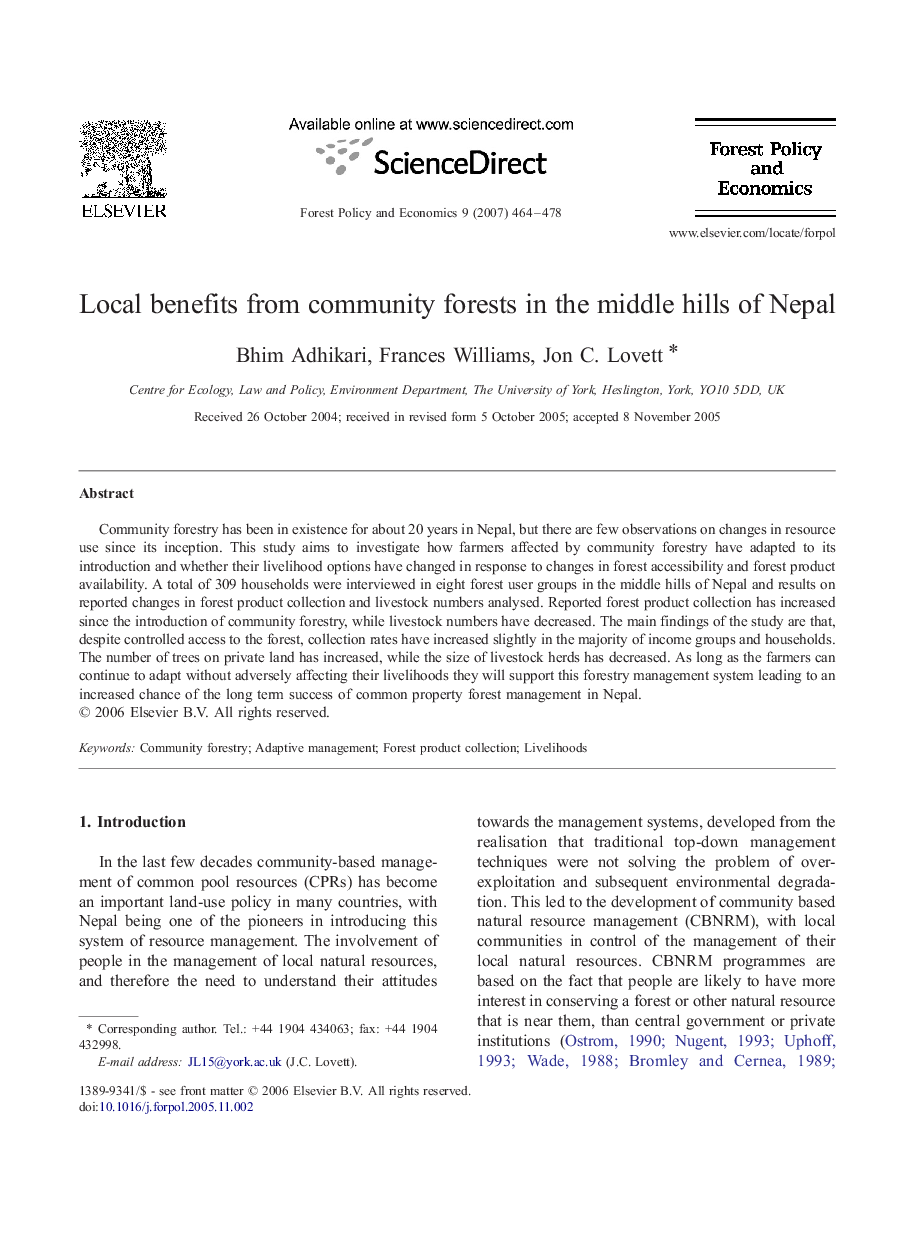| Article ID | Journal | Published Year | Pages | File Type |
|---|---|---|---|---|
| 91612 | Forest Policy and Economics | 2007 | 15 Pages |
Community forestry has been in existence for about 20 years in Nepal, but there are few observations on changes in resource use since its inception. This study aims to investigate how farmers affected by community forestry have adapted to its introduction and whether their livelihood options have changed in response to changes in forest accessibility and forest product availability. A total of 309 households were interviewed in eight forest user groups in the middle hills of Nepal and results on reported changes in forest product collection and livestock numbers analysed. Reported forest product collection has increased since the introduction of community forestry, while livestock numbers have decreased. The main findings of the study are that, despite controlled access to the forest, collection rates have increased slightly in the majority of income groups and households. The number of trees on private land has increased, while the size of livestock herds has decreased. As long as the farmers can continue to adapt without adversely affecting their livelihoods they will support this forestry management system leading to an increased chance of the long term success of common property forest management in Nepal.
